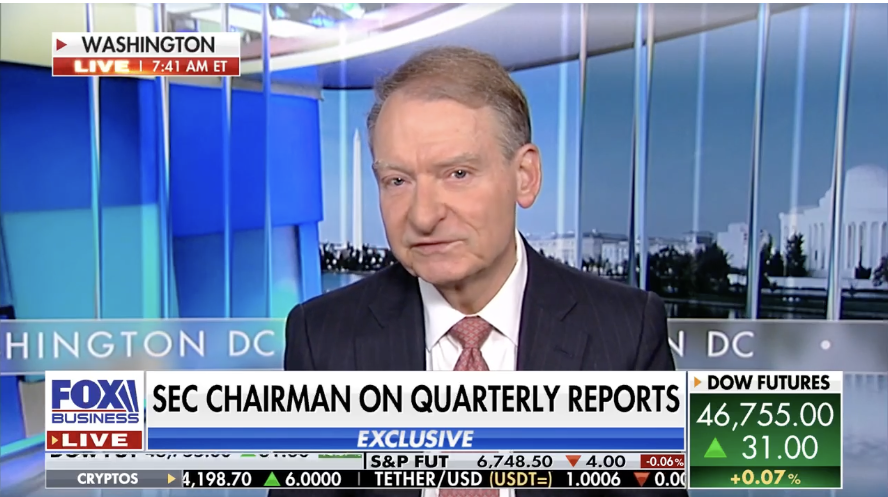The SEC innovation exemption is a proposed temporary regulatory carve-out designed to let crypto firms launch new digital-asset products under lighter oversight while tailored rules are developed. SEC Chair Paul Atkins aims to finalize rulemaking by year-end to accelerate approved ETPs and other crypto products.
-
Innovation exemption would temporarily ease securities rules for new crypto products.
-
Atkins ties the exemption to broader Project Crypto reforms and recent Rule 6c-11 ETF guidance.
-
Grayscale’s multi-asset ETP launched under new generic listing standards, illustrating faster approvals.
Innovation exemption by SEC Chair Paul Atkins aims to speed crypto product approvals — read how it affects ETPs and digital-asset markets. Learn more.
SEC Chair Paul Atkins said he will push an “innovation exemption” by year’s end to let crypto companies roll out products without outdated regulatory hurdles.
What is the SEC innovation exemption and how will it work?
The SEC innovation exemption is envisioned as a temporary regulatory carve-out that permits qualified crypto firms to introduce new digital-asset products under streamlined requirements while the SEC finalizes bespoke rules. The measure is intended to reduce delays for products such as exchange-traded products (ETPs) and novel token offerings.
How did Paul Atkins describe the timeline and intent?
Atkins told Fox Business the SEC is “working on rulemaking in the coming months” and is looking to have an innovation exemption in place by year-end. He framed the move as part of a broader effort to modernize securities rules and provide a stable platform for market innovation.

SEC Chair Paul Atkins speaking on Fox Business on Tuesday. Source: Fox Business
The U.S. Securities and Exchange Commission is pursuing this exemption amid recent operational changes, including generic listing standards that accelerated approval for certain multi-asset crypto ETPs.
Why does the SEC see an exemption as necessary?
Atkins argues that legacy securities rules can slow product development and that a targeted exemption will allow the market to test innovations while the SEC develops permanent, tailored regulations. This approach aims to balance investor protection with faster market access for new products.
What recent market developments support the exemption idea?
Last week, the first multi-asset crypto ETP launched, offering exposure to BTC, ETH, XRP, SOL and ADA. That product used the SEC’s recently announced generic listing framework under Rule 6c-11, which reduced ETF listing timelines and illustrated how regulatory updates can speed product rollouts.
Frequently Asked Questions
Will the innovation exemption change how tokens are classified?
The exemption would not automatically reclassify tokens. Classification still depends on facts and circumstances, including offering structure. Atkins has signaled a narrower view on which tokens meet the securities definition compared with past enforcement positions.
How will investors be protected during the exemption period?
Protections could include disclosure requirements, limited-time authorizations, investor suitability thresholds and ongoing reporting obligations. The SEC has said it intends to pair flexibility with safeguards while working on permanent rules.
Key Takeaways
- Temporary carve-out: The innovation exemption would give crypto firms short-term relief from some securities rules while permanent regulations are drafted.
- Timeline: Chair Paul Atkins targets rulemaking and implementation by year-end, subject to formal SEC procedures.
- Market precedent: Recent generic listing standards and a new multi-asset ETP demonstrate how policy changes can speed product launches.
Conclusion
SEC Chair Paul Atkins’ push for an innovation exemption is a pragmatic step to align securities regulation with rapid crypto innovation. By combining temporary relief with Project Crypto reforms and recent Rule 6c-11 precedents, the SEC aims to speed product approvals while retaining investor safeguards. Watch official SEC releases for final rule details.
